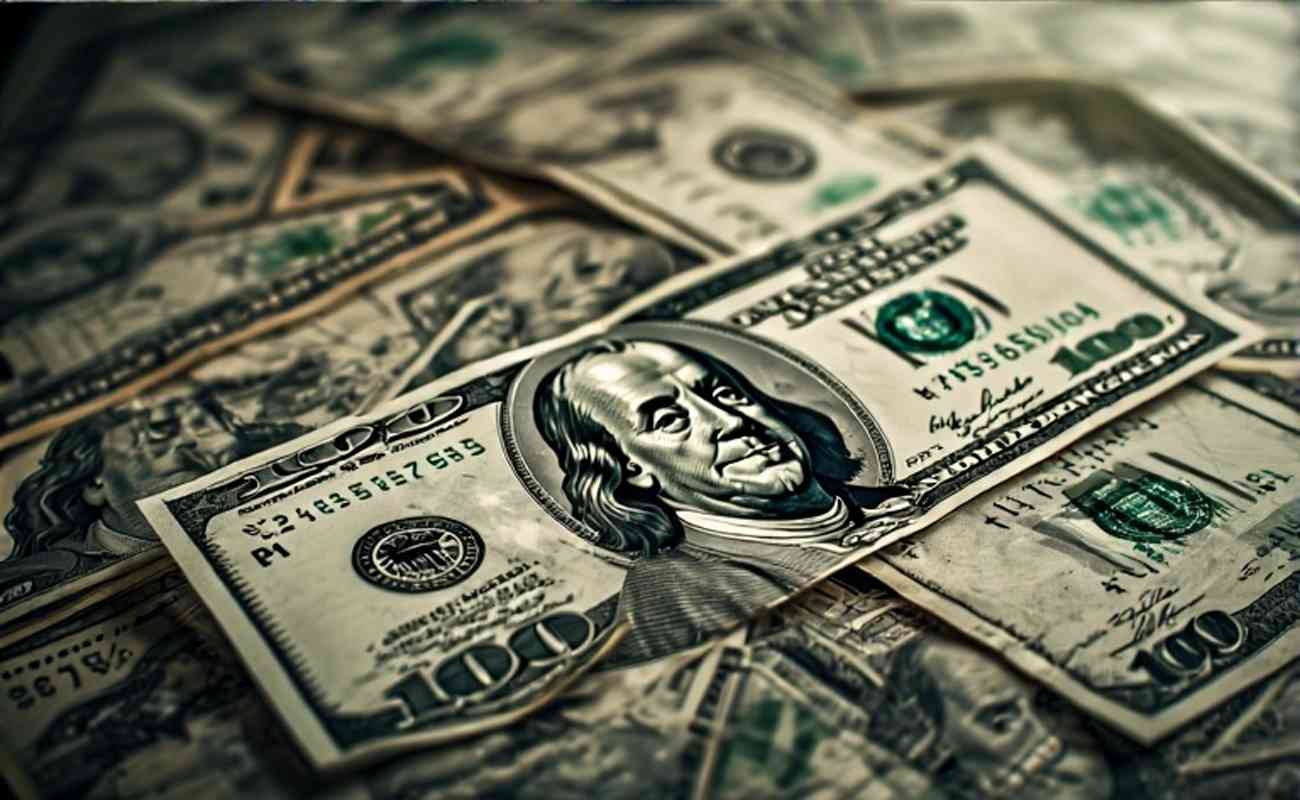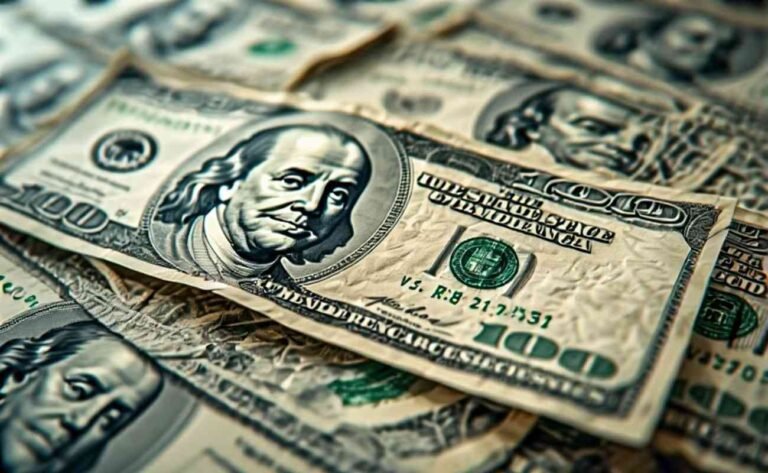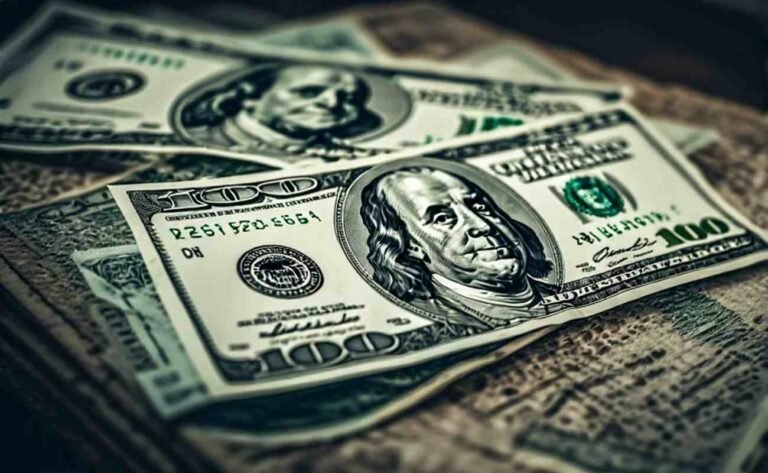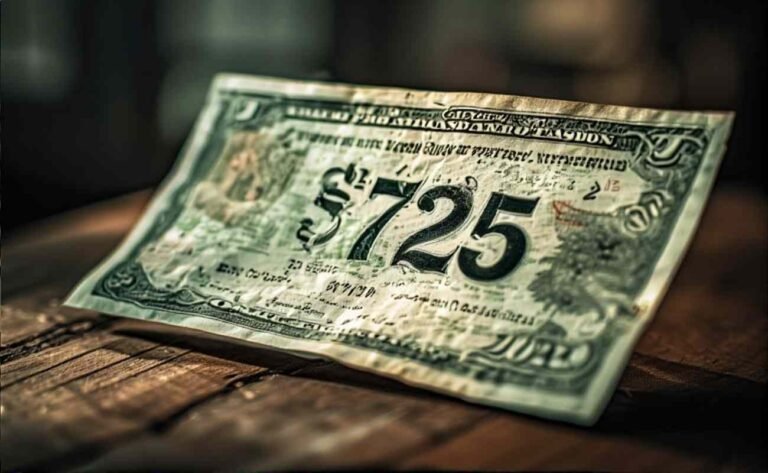$2503 Stimulus Checks in 2025: Fact or Fiction? Your Ultimate Guide
The claim of $2503 stimulus checks circulating online has sparked widespread interest among Americans grappling with rising costs. As of now, no federal legislation supports a $2503 stimulus payment, and the IRS has not confirmed such a program. Misleading social media posts and unverified websites have fueled this rumor, often leading to confusion or scams. However, legitimate financial aid options, like the 2021 Recovery Rebate Credit and state-level relief programs, still exist for eligible individuals. This comprehensive guide separates fact from fiction, detailing eligibility, payment status, and available alternatives in 2025, ensuring you stay informed and protected.
With inflation and economic uncertainty impacting households, understanding what financial relief is truly available is crucial. This article dives deep into the $2503 stimulus check rumor, explores real aid programs, and provides actionable steps to access them. Through detailed lists, tables, and expert insights, we’ll clarify eligibility criteria, debunk myths, and highlight verified government assistance. Let’s navigate the facts together to ensure you don’t miss out on legitimate support while avoiding scams.
What Are $2503 Stimulus Checks? Unpacking the Rumor
The buzz around $2503 stimulus checks began on social media platforms like X and unverified blogs, claiming a new federal payment would arrive in July or August 2025. Unlike the well-documented stimulus payments of 2020 and 2021, no official government sources, including the IRS or U.S. Treasury, have announced this amount. The rumor likely stems from misinformation or misinterpretations of past relief programs, such as the $1,400 Economic Impact Payments from the American Rescue Plan Act.
To clarify, let’s examine why this claim lacks credibility:
- No Legislative Backing: Past stimulus checks (e.g., $1,200, $600, $1,400) were tied to specific laws like the CARES Act. No such legislation exists for $2503 in 2025.
- Unverified Sources: The rumor originates from non-credible websites, not official channels like irs.gov.
- Scam Risks: Fraudsters exploit such rumors, tricking people into sharing personal information.
Instead of chasing unverified claims, focus on legitimate programs. Below, we outline real financial aid options and how to access them safely.
$2503 Stimulus Payment Eligibility
There is no verified information about a $2,503 federal stimulus payment being issued in August 2025 or any other time this year. Claims circulating online about such a payment are false or misleading, according to official IRS and U.S. Treasury statements .
What’s Actually Happening with Stimulus Payments in 2025?
- No New Federal Stimulus Checks
- The IRS has confirmed that no new federal stimulus payments are scheduled for 2025.
- The last major federal stimulus checks (Economic Impact Payments) were distributed between 2020 and 2021.
- Unclaimed 2021 Stimulus Payments (Recovery Rebate Credit)
- The IRS automatically issued up to $1,400 per person to about 1 million taxpayers who missed claiming the Recovery Rebate Credit on their 2021 tax returns.
- The deadline to file for this credit was April 15, 2025—it has now passed.
- State-Level Stimulus & Rebates
Some states are offering financial relief, but none are distributing $2,503 payments. Examples include:- New York: Inflation Refund ($300–$500) for income-qualified residents.
- California: Up to $725 for low-income households.
- Colorado: TABOR refunds (up to $800 for singles, $1,600 for couples).
- Georgia: Tax rebates of $250–$500.
How to Check for Legitimate Payments
- Visit IRS.gov for tax refunds or unclaimed credits.
- Check your state’s Department of Revenue for local rebates.
- Beware of scams—the IRS does not call, text, or email about stimulus payments
Conclusion
The $2,503 stimulus rumor is false. While some state aid exists, no federal payment of that amount is confirmed. For real financial relief, check state programs or pending tax refunds .
Legitimate Financial Relief Programs in 2025
While $2503 stimulus checks are not real, several federal and state programs offer financial support in 2025. Here’s a detailed list of verified options:
- 2021 Recovery Rebate Credit
- What It Is: A tax credit for those who missed the $1,400 stimulus payment in 2021.
- Eligibility:
- Filed a 2021 tax return by April 15, 2025.
- Adjusted Gross Income (AGI) under $75,000 (single) or $150,000 (married filing jointly).
- Valid Social Security Number (SSN).
- How to Claim: Check your IRS account or file a 2021 tax return to claim the credit. Payments are issued via direct deposit or check.
- Status: The IRS is still processing these payments for eligible filers.
- California Sacramento Family First Initiative
- What It Is: A state program providing $725 monthly payments to 200 low-income families through November 2025.
- Eligibility:
- Reside in Sacramento, California.
- Meet state-defined low-income thresholds.
- How to Apply: Contact local California government offices for enrollment details.
- Note: This is not a federal stimulus but a targeted state relief effort.
- Alaska Permanent Fund Dividend (PFD)
- What It Is: A $1,702 annual payment funded by Alaska’s oil revenue, distributed to residents in 2025.
- Eligibility:
- Permanent Alaska resident.
- Applied between June 1 and July 31, 2025.
- Not claimed as a dependent elsewhere.
- How to Apply: Submit applications via the Alaska Department of Revenue website.
- Learn More: For full details, check our guide on $1702 Stimulus Check August Alaska PFD Guide.
- State-Specific Rebates
- Examples: Oregon and Minnesota offer tax rebates based on income and tax filings.
- Eligibility: Varies by state; typically requires residency and income below state thresholds.
- How to Access: Check state revenue department websites for program details.
| Program | Payment Amount | Eligibility | Application Deadline | Administered By |
|---|---|---|---|---|
| Recovery Rebate Credit | Up to $1,400 | 2021 tax filers, AGI < $75,000/$150,000 | April 15, 2025 | IRS |
| Sacramento Family First | $725/month | Low-income Sacramento residents | Ongoing through Nov 2025 | California State |
| Alaska PFD | $1,702 | Alaska residents, applied June–July 2025 | July 31, 2025 | Alaska Dept. of Revenue |
| Oregon/Minnesota Rebates | Varies | State residents, income-based | Varies | State Revenue Departments |
Why the $2503 Stimulus Check Rumor Persists
Rumors like the $2503 stimulus payment gain traction due to economic pressures and past stimulus success. During the COVID-19 pandemic, the U.S. government issued three rounds of Economic Impact Payments:
- CARES Act (2020): $1,200 per adult, $500 per child.
- COVID-Related Tax Relief Act (2020): $600 per adult/child.
- American Rescue Plan (2021): $1,400 per adult/dependent.
These programs set a precedent, making new stimulus claims believable. However, economic conditions in 2025—high inflation and tight federal budgets—make new federal checks unlikely without Congressional approval. Misinformation spreads when:
- Social Media Amplifies Claims: Platforms like X and Facebook circulate unverified posts.
- Scammers Exploit Hope: Fraudulent websites promise payments for personal details.
- Lack of Clarity: Confusion about state vs. federal programs fuels rumors.
To stay safe, always verify information through trusted sources like the IRS website (irs.gov) or major news outlets.
Eligibility Criteria for Past Stimulus Checks: A Reference
To understand why $2503 stimulus checks are unlikely, let’s review the eligibility for previous federal payments. These criteria highlight the structured process missing from the 2025 rumor:
- Residency:
- U.S. citizen or legal resident with a valid SSN.
- Nonresident aliens were ineligible.
- Income Limits:
- Single filers: AGI below $75,000 for full payment, phased out up to $80,000.
- Married filing jointly: AGI below $150,000, phased out up to $160,000.
- Head of household: AGI below $112,500, phased out up to $120,000.
- Tax Filing:
- Filed a 2019 or 2020 tax return for 2020 payments, or 2020/2021 for 2021 payments.
- Non-filers could use the IRS Non-Filers tool (discontinued in 2025).
- Dependents:
- Qualifying children under 17 (2020) or all dependents (2021) received payments.
- Dependents claimed on another’s return were ineligible.
- Special Cases:
| Criteria | 2020 CARES Act | 2020 Tax Relief Act | 2021 American Rescue Plan |
|---|---|---|---|
| Amount | $1,200/adult, $500/child | $600/adult/child | $1,400/adult/dependent |
| AGI Threshold | $75,000/$150,000 | $75,000/$150,000 | $75,000/$150,000 |
| Dependent Age | Under 17 | Under 17 | All ages |
| Non-Filer Tool | Available | Available | Available until 2021 |
This structured approach contrasts with the vague, unverified $2503 claim, reinforcing its lack of legitimacy.
How to Check Your Stimulus Payment Status
If you’re eligible for the 2021 Recovery Rebate Credit or state programs, tracking your payment is straightforward. Here’s how:
- IRS Online Account:
- Create an account at irs.gov to view payment history.
- Check Economic Impact Payment totals under the Tax Records page.
- Verify if your 2021 credit was processed.
- Get My Payment Tool:
- Previously used to track stimulus checks, this tool is discontinued for 2025.
- Instead, use your IRS account or contact the IRS at 1-800-829-1040.
- State Program Portals:
- For state-specific aid (e.g., Alaska PFD), visit state revenue websites.
- Update banking details for direct deposits.
- What to Do If Missing a Payment:
- Confirm your 2021 tax filing status.
- Ensure banking information is updated with the IRS or state agency.
- File a claim for the Recovery Rebate Credit if eligible (deadline passed April 15, 2025).
Pro Tip: Scammers may send fake texts or emails about payment status. Never share personal details unless on official websites like irs.gov.
Avoiding Scams Related to $2503 Stimulus Checks
Scammers exploit rumors like $2503 stimulus payments to steal personal information. Here’s how to protect yourself:
- Verify Sources:
- Only trust information from irs.gov, treasury.gov, or reputable news sites.
- Ignore social media posts or emails claiming urgent payments.
- Protect Personal Information:
- Never share SSN, bank details, or passwords via unsolicited calls, texts, or links.
- Use secure, official websites for updates.
- Report Fraud:
- Report suspicious activity to the IRS via their fraud hotline (1-800-829-0433).
- Notify your bank if you suspect compromised accounts.
- Recognize Red Flags:
- Promises of “fast-tracked” payments for a fee.
- Requests for payment to “unlock” stimulus funds.
- Links to non-government websites asking for personal data.
By staying vigilant, you can safeguard your finances and focus on legitimate aid.
State-Level Financial Aid in 2025: What’s Available?
Beyond federal programs, several states offer relief to residents in 2025. Here’s a breakdown:
- California:
- Program: Sacramento Family First.
- Details: $725 monthly payments for low-income families.
- Eligibility: Residency in Sacramento, income below state thresholds.
- Duration: Through November 2025.
- Alaska:
- Program: Permanent Fund Dividend.
- Details: $1,702 annual payment from oil revenue.
- Eligibility: Applied by July 31, 2025; permanent resident.
- New York:
- Program: Inflation relief checks.
- Details: Up to $400 for eligible residents (varies by program).
- Learn More: See our guide on $400 New York Inflation Relief Check Guide.
- Other States:
- Oregon: Tax rebates for low-income filers.
- Minnesota: One-time payments based on 2024 tax returns.
- How to Apply: Check state revenue websites for details.
| State | Program | Amount | Eligibility | Application Process |
|---|---|---|---|---|
| California | Sacramento Family First | $725/month | Low-income, Sacramento resident | Local government offices |
| Alaska | Permanent Fund Dividend | $1,702/year | Alaska resident, applied by July 31 | Alaska Dept. of Revenue website |
| New York | Inflation Relief Check | Up to $400 | Income-based, NY resident | State tax portal |
| Oregon | Tax Rebate | Varies | Low-income, filed 2024 taxes | Oregon Revenue Department |
Economic Context: Why New Stimulus Checks Are Unlikely
In 2025, economic conditions make new federal stimulus checks like $2503 payments improbable:
- Inflation: High inflation strains federal budgets, reducing the likelihood of new relief packages.
- National Debt: Congress faces pressure to limit spending, making large-scale stimulus difficult.
- Past Precedent: Previous checks required extensive legislative processes, unlike the unverified $2503 claim.
However, state programs and targeted credits like the Recovery Rebate Credit continue to provide relief. Monitoring official sources ensures you don’t miss legitimate opportunities.
How to Stay Informed About Financial Aid
To avoid falling for rumors like $2503 stimulus checks, follow these steps:
- Bookmark Official Websites:
- IRS (irs.gov) for federal updates.
- State revenue departments for local programs.
- Subscribe to News Alerts:
- Follow reputable outlets like USA Today or CNBC for financial news.
- Set alerts for “stimulus checks” or “tax credits.”
- Check Social Media Wisely:
- Verify claims on X or Facebook against official sources.
- Avoid clicking links from unverified posts.
- Consult Tax Professionals:
- For complex cases, a CPA can confirm eligibility for credits like the Recovery Rebate.
By staying proactive, you can access real aid and avoid misinformation.
FAQs About $2503 Stimulus Checks
- Are $2503 stimulus checks real in 2025?
No, there’s no federal approval for a $2503 payment. The rumor stems from unverified online sources. - Can I still claim past stimulus payments?
Yes, the 2021 Recovery Rebate Credit (up to $1,400) is available if you filed your 2021 taxes by April 15, 2025. - How do I avoid stimulus scams?
Never share personal details via unsolicited communications. Verify claims on irs.gov. - What state programs are available?
California, Alaska, New York, and others offer relief. Check state websites for eligibility.
Conclusion
The $2503 stimulus check rumor highlights the importance of verifying financial aid claims. While no such federal payment exists in 2025, legitimate options like the 2021 Recovery Rebate Credit and state programs offer real support. By using official sources, updating your IRS account, and staying cautious of scams, you can access available aid safely. Keep informed through trusted channels, and don’t let misinformation derail your financial planning.







